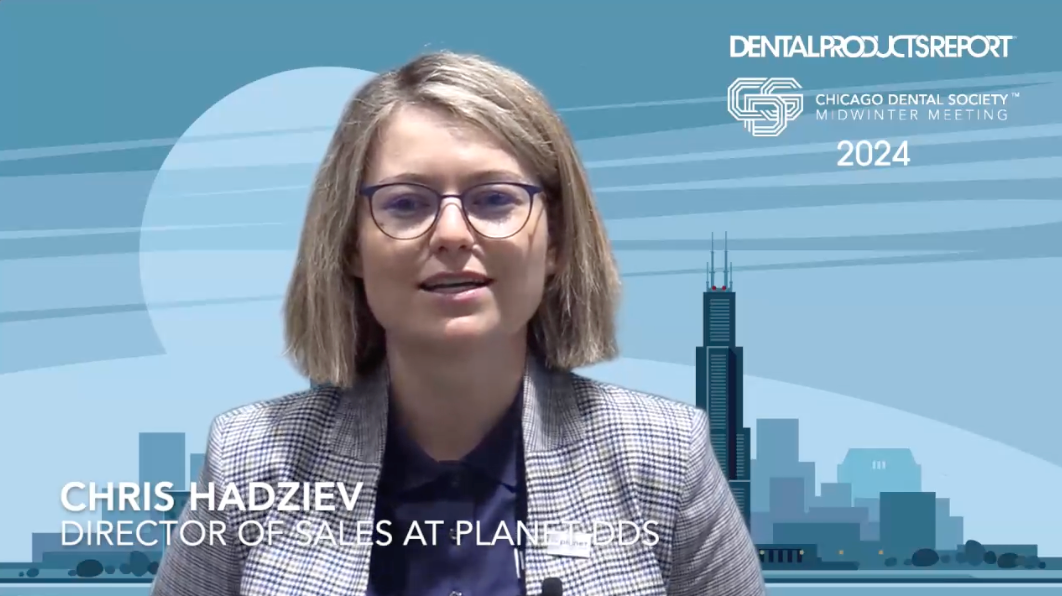SPONSORED: Give Yourself a Free SEO Analysis in 4 Quick Steps
Since so many different factors influence SEO, it’s easy to stress over the small stuff affecting your rankings and completely miss huge, underlying issues that wreak havoc over your web presence. With this audit, you’ll be able to identify any major issues holding you back.

Do you know where your dental practice ranks online? Do you know who your direct competitors are? Are you familiar with the areas of your website that need improvement?
To put your practice in the best possible situation to succeed, knowing the answers to these questions is extremely important. The way your practice looks, feels, and ranks online has never been more crucial for the growth of a business. Your dental practice is no different.
If you need help answering the questions above, you are probably due for a search engine optimization (SEO) audit. Since so many different factors influence SEO, it’s easy to stress over the small stuff affecting your rankings and completely miss huge, underlying issues that wreak havoc over your web presence. With this audit, you’ll be able to identify any major issues holding you back.
Step 1: Search Test
Google yourself
Although this may seem obvious, many businesses fail to see how they look online from a patient’s perspective. If you were in need of dental care and didn’t already have a dentist, how would you search for one online? While people search all different ways, the most common tends to be the keyword “dentist” followed by the location, whether they spell out the town name such as “dentist Chicago” or insert the zip such as “dentist 60604.”
Google yourself again
While “dentist” and your town name could be the most important keywords for you, they shouldn’t be the only ones you use to optimize your website. Do you specialize in dental implants? Do you take a special type of insurance? Are you now a provider of Invisalign? Figure out what separates you from other dentists in your area and see how you compare. Of course, ranking well for all patients is ideal. However, in very competitive areas or when dealing with a type of patient that is most profitable to your practice, it’s important to understand where you rank for more niche keywords/treatments, too.
Check Yahoo! and Bing
It’s no secret that Google is the king of search engines. However, in recent years, Yahoo! and Bing have increased their market share thanks to Mozilla’s Firefox and Apple’s Safari web browsers shifting away from Google as their default search engine.
Search Test Results
Where do you rank? Are you on the first page of your searches? If not, 94% of search engine traffic will never reach your website. Write down the websites of the top few results for each search and take a look at their websites. Are they doing anything different than you?
Step 2: Mobile Test
On April 21, 2015, Google released an update that was designed to boost mobile-friendly pages in Google’s search results. Websites that are not mobile-friendly are being penalized in the search rankings. To test your website to see if it’s mobile, plug your website address into Google’s Mobile-Friendly Test Tool.
If your website isn’t mobile-friendly, it may be time to redesign your website before you invest a lot of time and energy into boosting your SEO.
Step 3: Behind-the-Scenes Check
So you did your search and realized you are missing hundreds of visitors and potentially dozens of new patients each month due to poor search engine optimization. I’ll just assume your first question is: WHY?!
This deeper dive will check some minor coding issues that are potentially harming your rankings, but are easy to see and easy to fix. Keep in mind that the following steps should be done for all pages on your website.
Title Tags
Your title tag is an element of your web page that provides a concise description of your page’s content. You can locate it by:
1. Hovering your mouse over the tab in your browser or by
2. Viewing the page source. To view the page source:
a. Right click on the page you want to inspect
b. Click “view page source”
c. Search the page using the buttons “control + F”
d. Enter “Title” in the search box
What you’re looking for is for the title tag to contain your primary keywords (such as dentist and town name) and your practice name. Ideally, you should keep it under 55 characters as anything over that can be cut off in Google searches.
Since Google prioritizes words, you want keyword strings such as “Chicago Dentist” together. The title tag “Dentist – Happy Smiles Dental Care” doesn’t list your location, meaning it’s harder for your web page to compete in the search results for “Chicago Dentist.”
Step 2: Header Tags
Header tags, or the <h1> tag in HTML, are pieces of code that allow you to make certain words stand out on a page. While there can be multiple header tags (<h2>, <h3>, etc.) the <h1> tag is the most important header tag on the page. Heading tags are used to tell the search engines what is important for them to associate with and recognize on the page. The different numbers tell the search engines the order of importance.
You can locate your header tags by viewing the page source. To view the page source:
a. Right click on the page you want to inspect
b. Click “view page source”
c. Search the page using the buttons “control + F”
d. Enter “h1” in the search box
H1 Tag Review:
· Are you using the h1 tag? If so, is there only one per page?
· Does the h1 tag use your keywords?
· Do those keywords match your page title?
· Are those keywords near the beginning of your h1 tag?
· Does the h1 tag describe what your page is about?
Any changes that you need to make should be doable by your website’s editor tool. If an editor tool doesn’t exist, you may need to contact your website developer. These changes don’t take a while to make and should be done easily.
Step 4: Content Check.
Search engines are all about providing the best user experience. This extends to the type and quality of the content on your website. Did you write your content yourself? Did you have a copywriter create unique content for your website?
Duplicate Content
If you aren’t sure where your website’s content came from, there’s a strong possibility that you have duplicated content – content that is used on multiple websites across the Internet. If that’s the case, site owners suffer ranking and traffic losses as duplicated content is frowned upon by all search engines.
To check if you have duplicated content, take a few sentences from a page and paste them into a free plagiarism checker such as http://smallseotools.com/plagiarism-checker/. Edit any content that appears duplicated.
Consistent Updates
This is where a blog page is extremely handy. One of the biggest influencers for better search rankings is the practice of posting unique, relevant content to your website. Whether this comes in the form of articles or blogs, search engines and patients alike love it. We recommend posting new content at least once per week about everything involving your practice.
Here are some blog ideas:
· Q&A with the doctor. Extend your patient education materials and go in depth on a particular case or a common question
· Do you now offer Invisalign or a new service? Write about why you are adding this treatment to your practice and how it benefits the patient
· Community news
· Tips and tricks for optimal oral health care such as best types of toothbrushes, toothpastes, etc.
· “Meet the staff.” Interview your newest hygienist. Patients love reading about aspects of your office that differentiate it from the practice down the street. Get personal!
*Make sure to add proper title and header tags to these posts!
While this is only the tip of the iceberg when it comes to diagnosing your website’s search engine optimization woes, you’ll undoubtedly be in a better position to rank well after following these 4 steps.
If you find yourself confused or tight on time to self-diagnose, don’t hesitate to reach out to VivioSites for a free website audit. Their web presence experts will issue a FREE report that analyzes all aspects of your website, from your design to SEO. Visit their website at viviosites.com or give them a call at 800-227-2513.
---

Anthony Giovine is the director of marketing at VivioSites, a leading online dental marketing company that specializes in acquiring patients for dental practices through mobile-friendly websites and advanced search engine optimization. VivioSites’ customer-first philosophy stresses no contracts and unlimited, live support with experts that get to know each individual practice. To learn more about how VivioSites helps dentists across North America reach the first page on Google, Yahoo!, and Bing, visit their website or email info@viviosites.com.
















